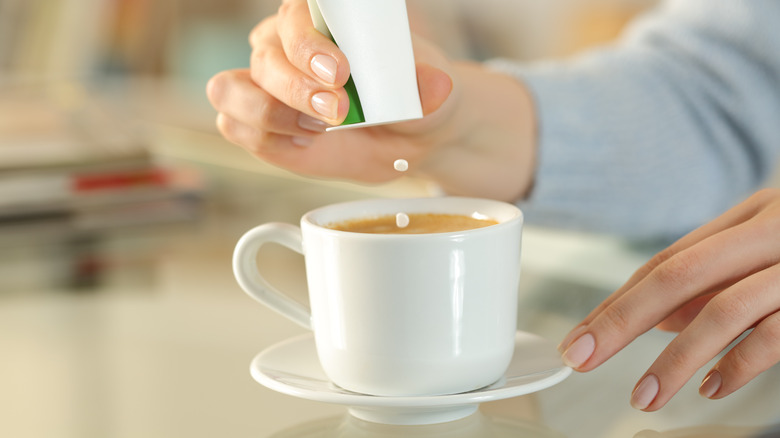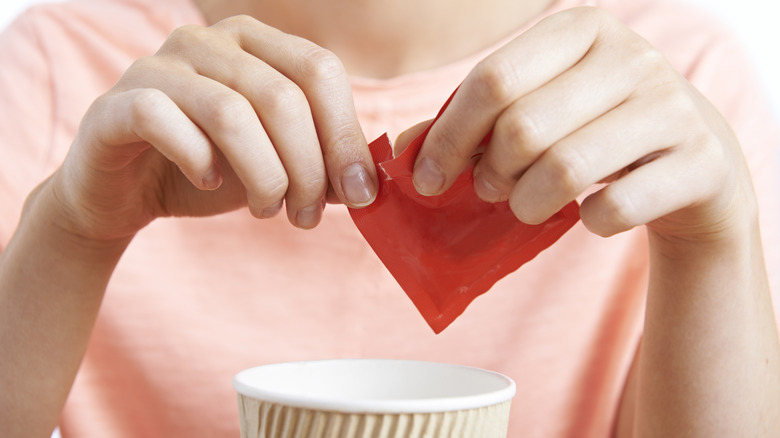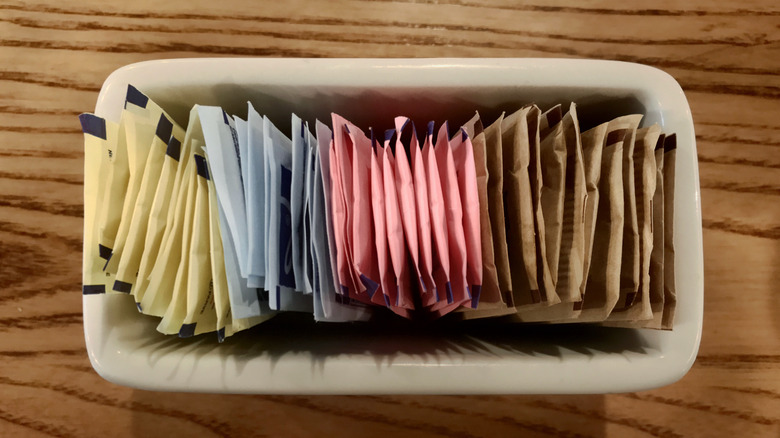What Is The Difference Between Splenda And Stevia?
There are many different types of artificial sweeteners, each with unique properties and chemical structures, and they are derived from different sources. Unlike natural sweeteners like sugar, honey, and maple syrup (derived from plants), artificial sweeteners are made from chemicals and created in a laboratory, says Johns Hopkins Medicine. Artificial sweeteners are designed to mimic the taste of sugar but with either fewer calories or lower glycemic impact, or both, according to the Mayo Clinic.
Artificial sweeteners are often used in various food and beverage products, including diet drinks, candy, and baked goods (via the Mayo Clinic). They are also available in packets and can be used in cooking and baking as a sugar substitute.
Splenda and stevia are two well-known artificial sweeteners (per Healthline). Although Splenda and stevia are both sugar substitutes, they're not exactly the same in their taste and are both unique in their composition.
What is the difference between Splenda and stevia?
Splenda is a brand name for sucralose, a synthetic compound that is created by chemically modifying sugar molecules. The process involves replacing three hydrogen-oxygen groups in a sugar molecule with chlorine atoms (via Live Science). Splenda is up to 600 times sweeter than sugar and contains almost zero calories, says WebMD. According to the source, the taste of Splenda is often preferred to other artificial sweeteners and it doesn't leave an aftertaste.
On the other hand, stevia is derived from the leaves of the Stevia rebaudiana plant; and, while it comes from a natural source it is highly processed. Stevia is also up to 400 times sweeter than sugar and has a bitter aftertaste that some people find unpleasant (via Food Insight).
According to Healthline, stevia is suitable for baking although it may give a licorice aftertaste. On the other hand, CHAS Health notes that Splenda is heat stable and does well with baking.
Which one is healthier?
According to Healthline, both stevia and sucralose are low in calories and do not contribute to blood sugar level spikes. However, Splenda and some brands of stevia contain maltodextrin, a type of carbohydrate that is derived from starch. Maltodextrin can cause blood sugar spikes, according to a 2015 study published in the journal Critical Reviews in Food Science and Nutrition.
The choice between Splenda and stevia will ultimately come down to personal preference and individual needs. If you are looking for a sugar substitute that has a more neutral taste, Splenda might be the better option since stevia is more bitter.
While artificial sweeteners have been deemed safe for consumption by regulatory agencies, including the Food and Drug Administration, there is still some debate about the long-term health effects of consuming them in large amounts. If you're unsure of the amount to consume, it's always best to check with a doctor or nutritionist.



